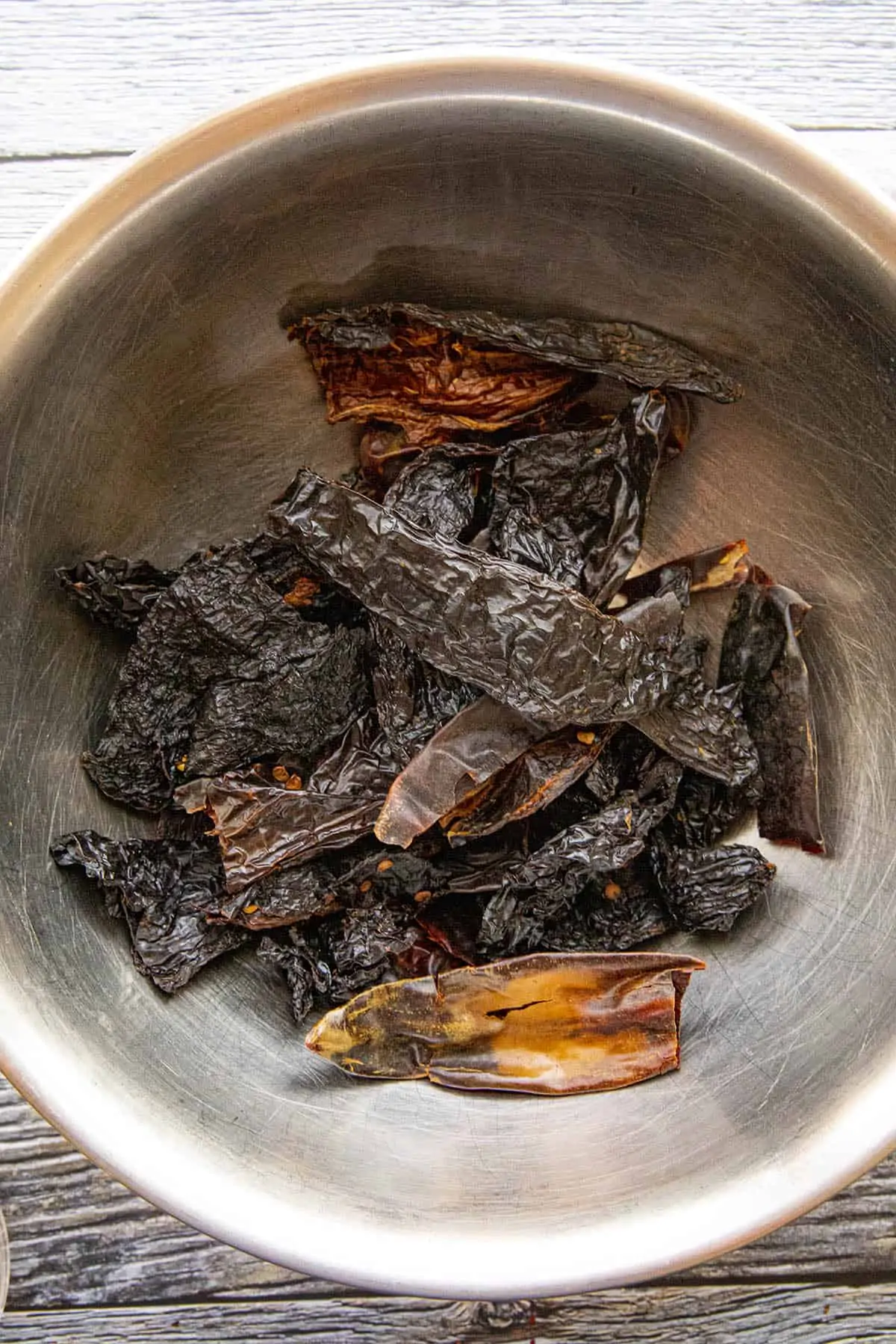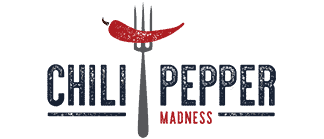Drying chili peppers is a great way to store them for the long term. You don't want to waste any of those chili peppers picked from that huge harvest this year. Here are a few ways to dry them so they don't go to waste.

The Basic Method for Drying Chili Peppers
Wash your chili peppers thoroughly after picking to remove any dirt, then dry.
Place on a plate or a wire rack in a dry, well ventilated room. You can also string the chilies up on string or thread and hang to dry. Within several weeks, you will have dried chili peppers and you can grind them up or use them as ornaments as desired.
Oven Drying Instructions
- Wash your chili peppers thoroughly after picking to remove any dirt.
- Cut them in half, lengthwise to expose the pepper innards.
- Arrange the chili peppers over a baking sheet.
- Bake at low heat, about 100 to 135 degrees.
- There is no set time to bake the chili peppers for drying. Keep an eye on them, turning every few minutes or so. You can leave the oven door cracked for some air flow. It will take several hours with this method. Keep in the oven until the moisture has been baked out of them. Use as desired!
Drying Chili Peppers Without an Oven - Air Drying
- In this case, dry your chili peppers whole. Do not slice.
- String them together on some strong thread with a few inches between each jalapeno peppers.
- Hang the chili peppers in direct sunlight. Be sure it is dry and warm.
It can take several weeks for the jalapenos to completely dry with this method, but it'll be worth it!
Last but not least, you can also consider a food dehydrator, which is a more fool proof method of drying chili peppers.
Drying Chili Peppers with a Dehydrator
A dehydrator is probably the easiest method for drying chili peppers. A dehydrator encloses the chili peppers and dries them overnight in soft heat. Slice them up before dehydrating for faster dehydration. You can find dehydrators in stores or online.
NOTE: This is the food dehydrator that I use. It works GREAT and I highly recommend it. It's an affiliate link, FYI: Food Dehydrator: Nesco Snackmaster Pro Food Dehydrator FD-75A - For dehydrating peppers and making powders.
What can you do with your dried chili peppers?
Grind them up to make your own chili powder, which is like cayenne powder, or keep them whole and use them as you might use a sun dried tomato. They can be rehydrated with hot water and go great with many recipes!
Also see: How to Rehydrate Dried Chili Peppers



Clark Carter says
Dried Chili: should the pepper be crisp or pliable when done?
Mike Hultquist says
Clark, it can be slightly pliable and still be dry, but they are usually crisp and break easily.
Paul:-) says
Hi Mike,
Thanks again for your encyclopaedic knowledge of chillies and all things connected with them.
I notice in the comments that several people have had concerns with drying chillies in a humid environment.
Here in Northern England I live in a quite damp, cool environment, particularly at this time of year.
Over the “summer” this year I successfully dried Thai chillies that I bought from the local Supermarket, simply by leaving them on the kitchen windowsill.
Our house is a back-to-back which means we only have windows on two sides. The corner of the house is due North so not much sunlight at this time of year.
Will I still be able to dry chillies by threading then onto string? Will the central heating help or hinder?
Thanks,
Paul:-)
Mike Hultquist says
Paul, you can try it, but humidity is the enemy of drying. The air usually needs to be quite hot and dry for it to work properly. Otherwise, they will soften and rot instead of dry.
Hal Taylor says
Hi Mike, I love many of your recipes, I've just made two batches of habanero pepper jelly (jam ;-)), and will make some hot sauce to use up the bounty of peppers at our farmers market; however, I want to dry the rest of my habanero's and other chili peppers in the oven as I don't have a dehydrator and live in a humid environment. Your instructions, along with many others say to set the oven to around 100F to 135F, most residential ovens only go as low as 170F, even the "warm" setting on most are 170F. Is there a way to manage this? I think leaving the door open to stave off some of the heat would just have the element cycle on more frequently. Any suggestions would be great, thanks.
Hal.
Mike Hultquist says
Hi, Hal. It's tough to do this in an oven for this exact reason. I really do recommend getting a dehydrator. It's very important to control the heat, as too high of heat will just cook them. I appreciate it, and I'm glad you're enjoying the recipes! Thanks.
jay says
If you hang chiles outside in the south, they will rot , not dry!
Mike Hultquist says
Yes, you need ZERO HUMIDITY!
Fiore Tullio says
Noi nel Centro Sud Italia, diciamo da Roma a Palermo, utilizziamo per l'essiccazione dei peperoncini il sole 🙂 Ottimi risultati!
Mike Hultquist says
Yes, it would be nice to dry them in the sun! Not everyone has the right climate. Enjoy!!
Julian says
Great site, thanks for all the info! Would it be a problem to remove the stems and innards before drying? you have to remove it anyway before you make most sauces... seems like it would be easier to do when fresh. or that affect the flavor? thanks
Mike H. says
Julian, many people actually do it (remove the stems and innards before drying). However, the inner membranes is where a significant portion of the heat in chili peppers is, so I prefer to keep those as I love spicy. If you prefer it on a milder side, this step is where you can control the heat even before you dry the peppers for the future use. If you are in doubt, dry a small batch with and another small batch without the innards, and see which one you prefer. Let me know which one is the winner for you!
Julian says
thanks Mike! I see your point. I guess it might be possible to remove most of the seeds from a fresh pepper while still leaving in the membrane... I want to make hot sauce with some Arbol peppers, which are quite small and may be difficult to remove the seeds when they're dried. Alternatively, could you could keep all the seeds in and just strain them out at the end?
Mike H. says
No worries, Julian. And yes, you can absolutely do that!
Lisa says
Can I dry my Tabasco peppers in my air fryer to make chili flakes?
Mike Hultquist says
Absolutely, Lisa. Check out this recipe: https://www.chilipeppermadness.com/preserving-chili-peppers/how-to-make-homemade-chili-flakes/
Rebecka says
Hello! I’ve been drying Thai chilis and garden salsa peppers on the kitchen counter in front of a sunny window, which has definitely been effective. I’d put a bunch of the dried Thai chilis in a jar in the pantry, but now I’ve taken them back out and put them back on the counter out of fear that they might still have some residual moisture. Some are near crispy, while others are just quite leathery.
How do I know when they’re dry enough?
Mike H. says
It's important to ensure that all of them are completely dry to prevent spoilage. Texture is the key - the peppers should crumble easily when you bend them. If they are leathery, like you say, it means that they still have some moisture in them. As a rule of thumb, if you see that some are crispy and others are leathery, it means that they have varying levels of moisture. Aim for uniform drying and remember that patience is your friend!
Lynn says
Thanks for the great info. on your site. I did dry some moruga peppers overnight in the oven at 150 deg F. Some of the dried peppers turned black. Should I discard the blackened dried peppers? Thanks in advance.
Mike Hultquist says
Thanks, Lynn. 150 degrees F is a bit high and could be the source of the issue. Otherwise, it's from rot that was there before drying. If it's from rot, definitely discard. If it's from too much heat, they could be OK to consume, but likely suffered some flavor loss.
Andrea says
Hi Mike
I’m enjoying your site a lot you have so many recipes and ideas for peppers! Just watched the video about drying peppers. I plan to use my Nesco dehydrator to use up some of my beautiful peppers and was wondering how I could make my own blends to create seasoning like taco seasoning for instance?
Mike Hultquist says
Andrea, absolutely! You can make many, many blends. I do this all the time. I have a post on it that you can review here. Happy dehydrating! https://www.chilipeppermadness.com/preserving-chili-peppers/how-to-dehydrate-chili-peppers-and-make-chili-powders/
Karine, Choy Sim YONG says
My Husband has been growing his own chillues and have some chillies from last year that have dried on the kitchen trolley. Am I able to use these dried chillies as dried chillies sauce? I worry they could be mouldy inside. But they do seem to be very dried.
Mike Hultquist says
Yes, absolutely. It is common to make sauces from dried peppers. Works great! Simply rehydrate them and process them with other ingredients, like stock or vinegar, spices, tomato, etc. I have many recipes here that use dried peppers.